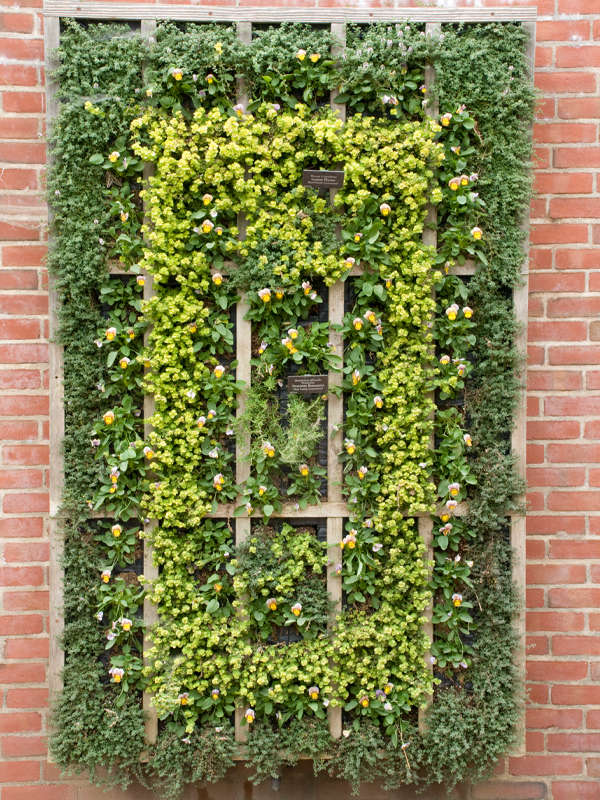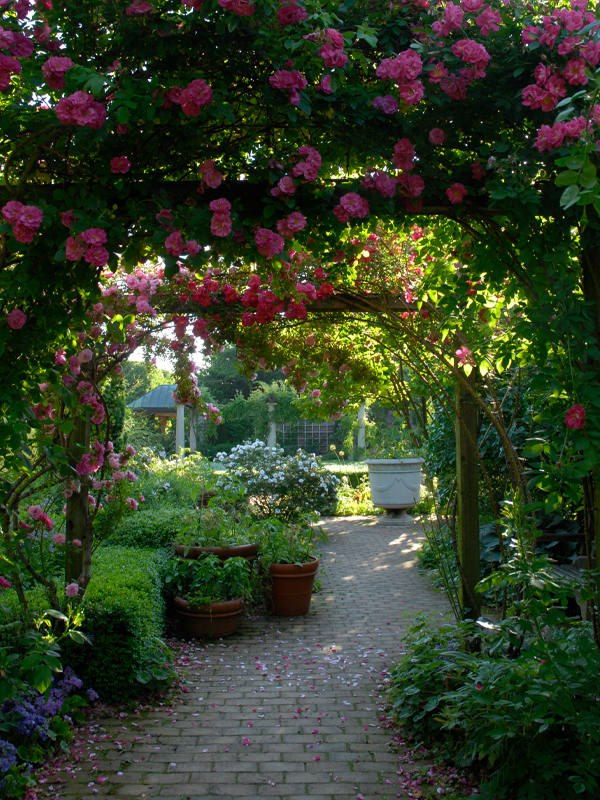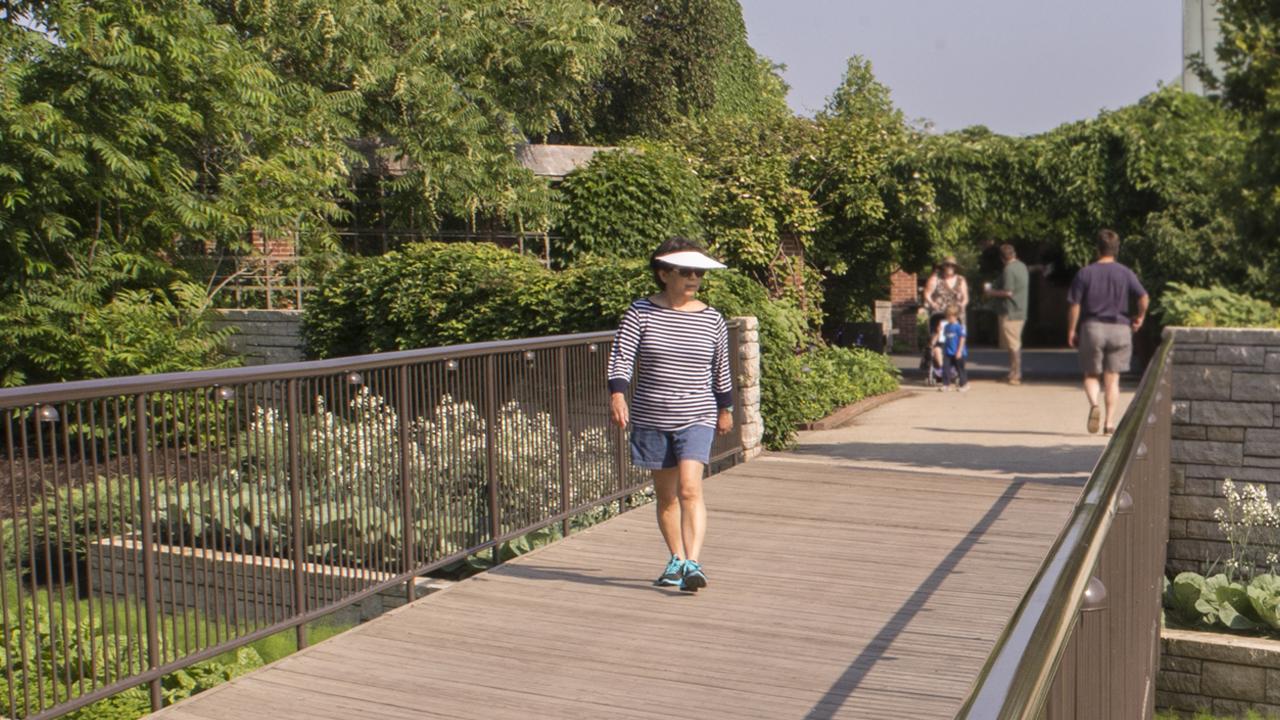

A Walk through the Regenstein Fruit & Vegetable Garden
Strange, but true.
This beautiful garden of edible plants is as much of a pleasurable stroll garden as any of the more traditional spaces, like the English Walled or the Landscape Gardens. They all feature individual garden rooms filled with gorgeous, best-for-the-Midwest plants, meandering paths, tidy brick-edged beds, fountains or pools, welcome benches to stop and admire with views across the lakes, and most importantly, captivating surprises at every turn.
Explore the Fruit & Vegetable Garden.
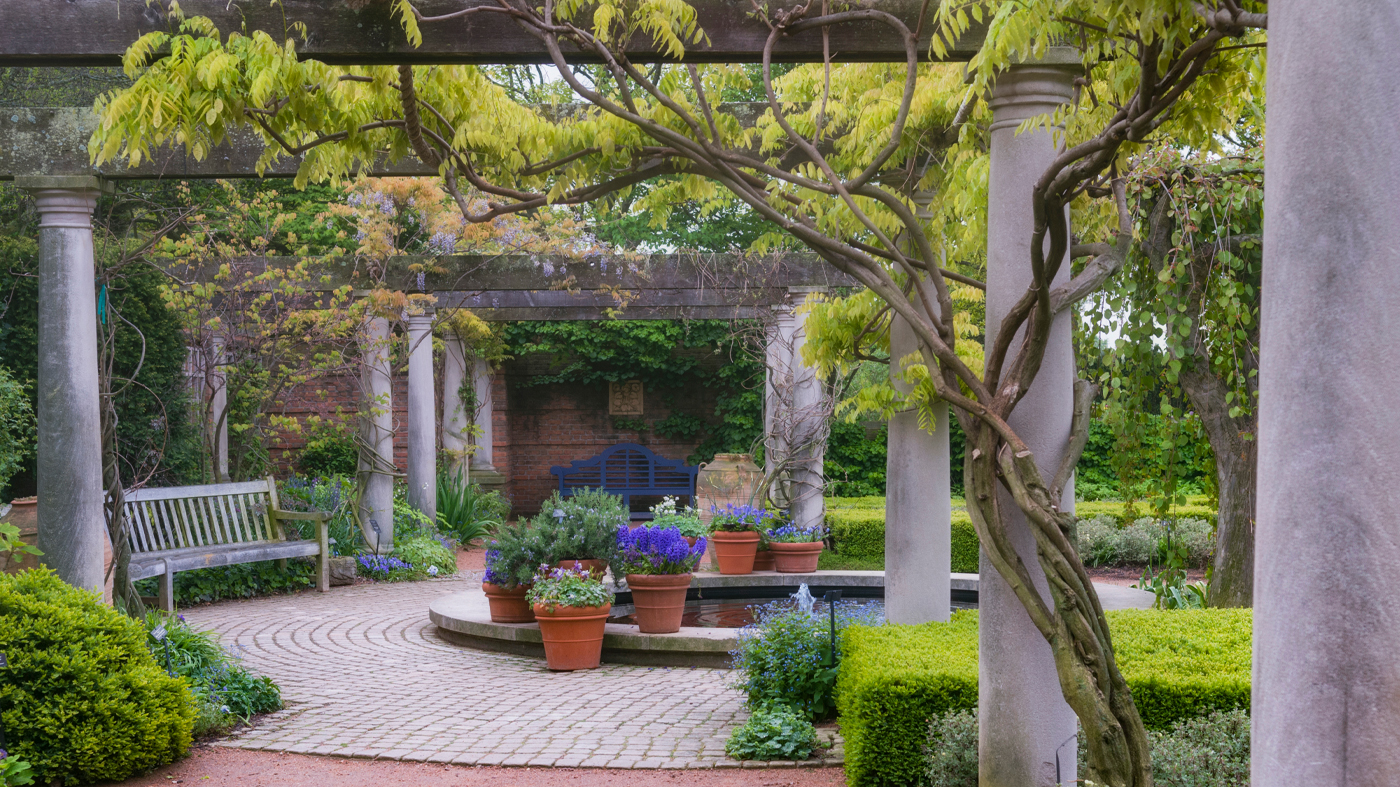
Structure in the Garden
One of the myriad ways by which the fruit and vegetable display gardens are distinguished from farm gardens is through the sophisticated use of hardscape, e.g., trellises, arbors, brick and stone walls, wooden latticework, crushed granite paths, and the multitiered arrangement of garden beds at different levels. These architectural techniques bring order and organization to the plant material, maximize yields in small spaces, and encourage you to try these plants, and these methods, yourself.
Vertical Gardens Elevate Eyes and Plants
Growing “up” is one way to create additional garden space. The grape arbor serves many purposes: it provides a sunny overhead support for American Concord Seedless grapes (perfect for jams, jellies, and fresh fruit), but cooling shade for you. It makes a grand architectural statement and relieves the monotony of typical crop gardens that exist on flat planes. Here, billowing annuals and perennials are planted at the base of its pillars, creating a magnificent floral walkway. Elsewhere, trellises angled to maximize their exposure to sunshine are covered with hardy kiwi vine, Chinese wisteria, and five-leaved akebia, while red brick walls turn green with oversized leaves of Boston ivy or minute leaves of miniature ivy.
Other vertical gardens extend space through wall planters stuffed with a mosaic of colorful plants, hanging baskets overflowing with veggies and herbs, and elevated wooden planters offering scented seasonal produce. Wherever there’s a sunny spot, there’s room for a pot, planter, trough, or garden bed.
Espalier or Open Orchard
Espalier, the art of training and trimming fruit trees to grow flat, is especially suited to courtyard, walled, or limited-space gardens. Note the line of Redchief apple trees growing against wires. They form a green, perfectly pruned wall and yield fat, normal-sized fruit. Against the protective, warm brick walls of the garden (reminiscent of the English Walled Garden) are examples of other espaliered fruit trees — Italian prune, European and Japanese plum, Kieffer and Moonglow pear, and Lodi apple.
For those with more land, perhaps an orchard is an option. Here, air circulation is key to healthy fruit development. Recommended varieties of apple and pear trees begin to bear fruit in midsummer and early red ovals of Maxine pears color up by July.
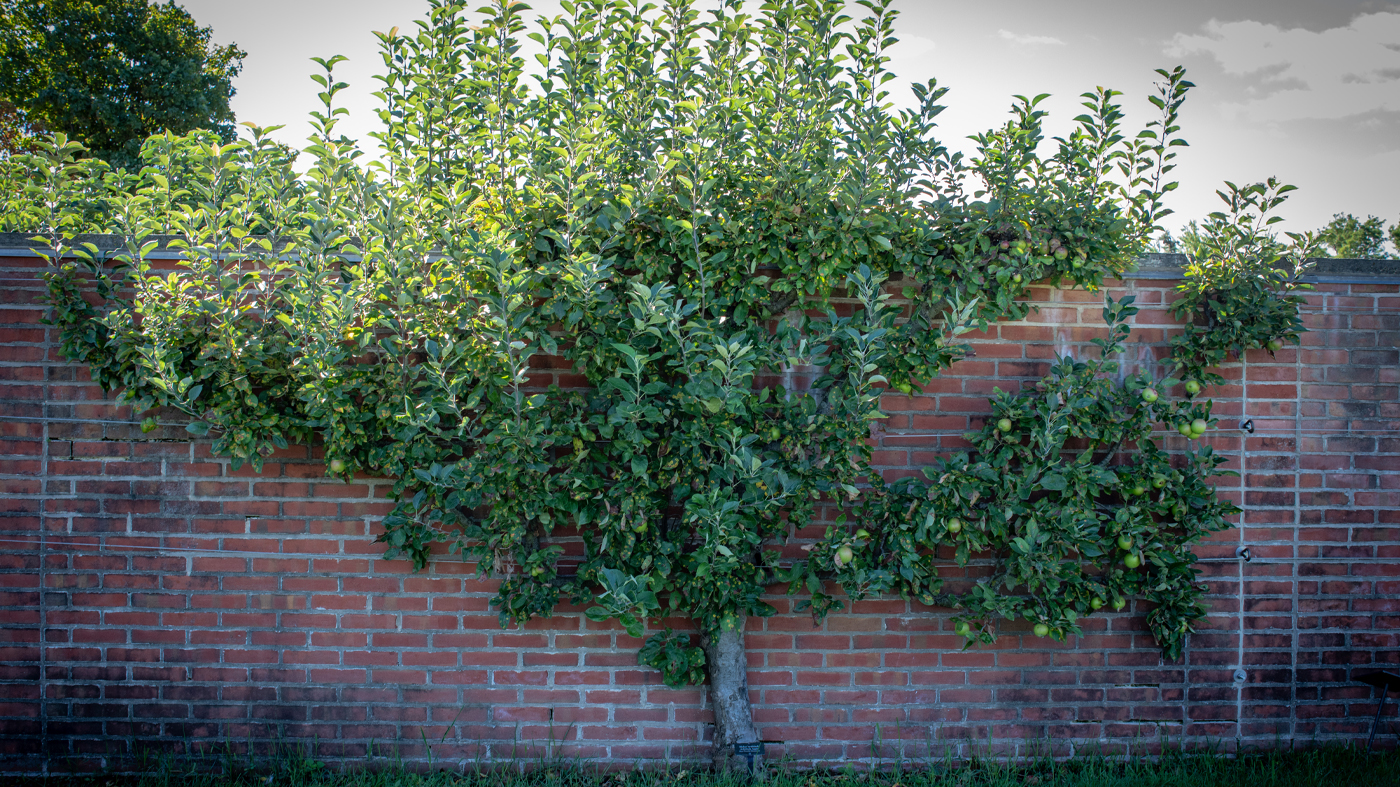
Organic Gardening
The garden is dotted with helpful brown, hand-lettered signs alerting visitors to behind-the-scenes organic-gardening techniques. Anticipating questions, they address why selected fruit trees are covered with a white powder and why brown paper bags cover some developing fruit. Environmentally friendly gardening practices are at work — alternatives to toxic methods used to control insects, disease, and fungus.
Other brown signs indicate “no-dig” zones where, to minimize soil disturbance, layers of organic matter are placed directly on the soil to minimize weeds, conserve moisture, and eventually to decompose, enriching the soil in the process.
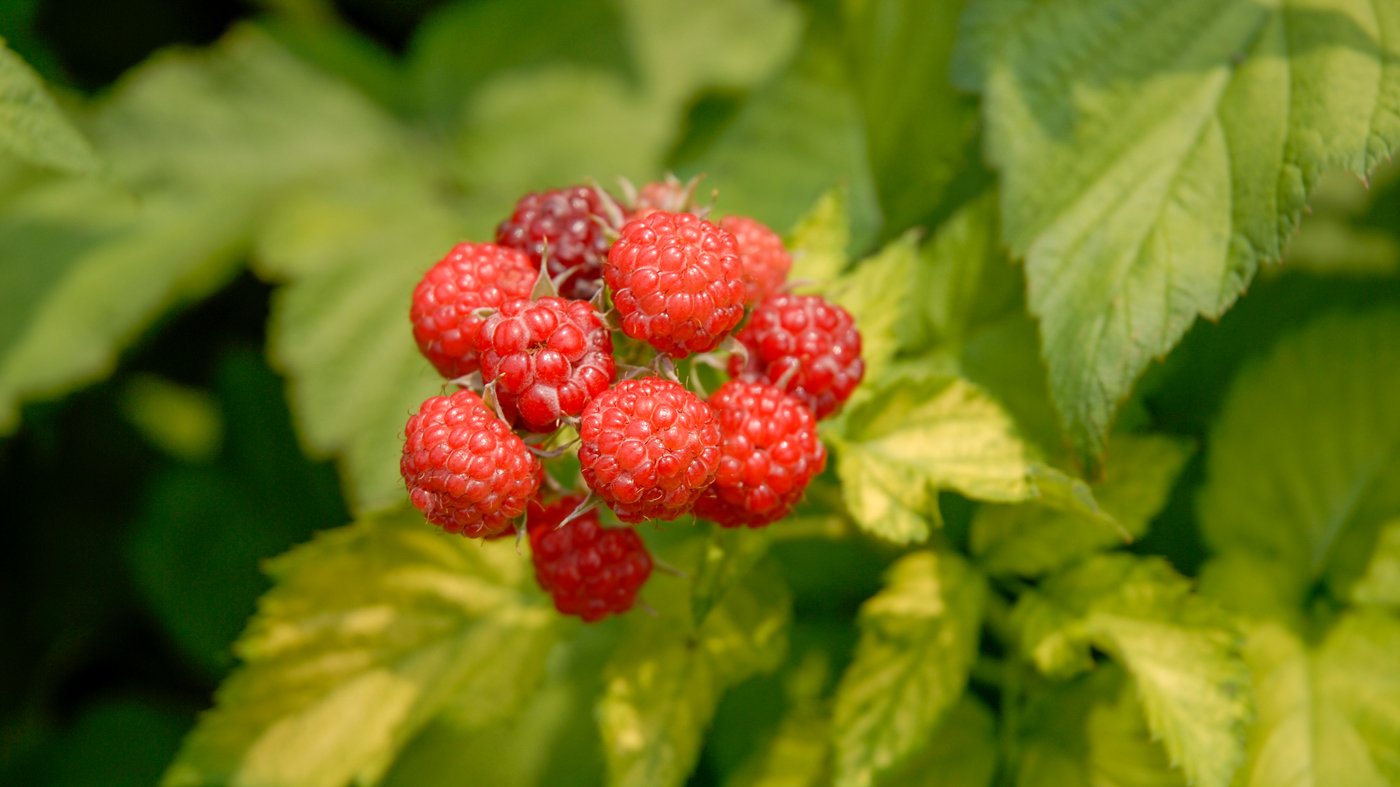
Plump Berries, Fatter Pumpkins
The growing season in the Midwest is short and intense. As soon as the ground can be safely dug in early spring, we’re ready to go with seeds or small transplants. Early crops (depending on the weather!) include juicy berries, multicolored chard and lettuces, spinach, peas, radishes, and so much more. Ending the harvest in late autumn are the “big boys” — melons, squashes, gourds, and pumpkins. Visitors are guaranteed to see plants in all stages of their growing cycle, especially when they flower on their way to form fruit or vegetables. This is a fascinating discovery, and an important lesson in learning where our food really comes from.
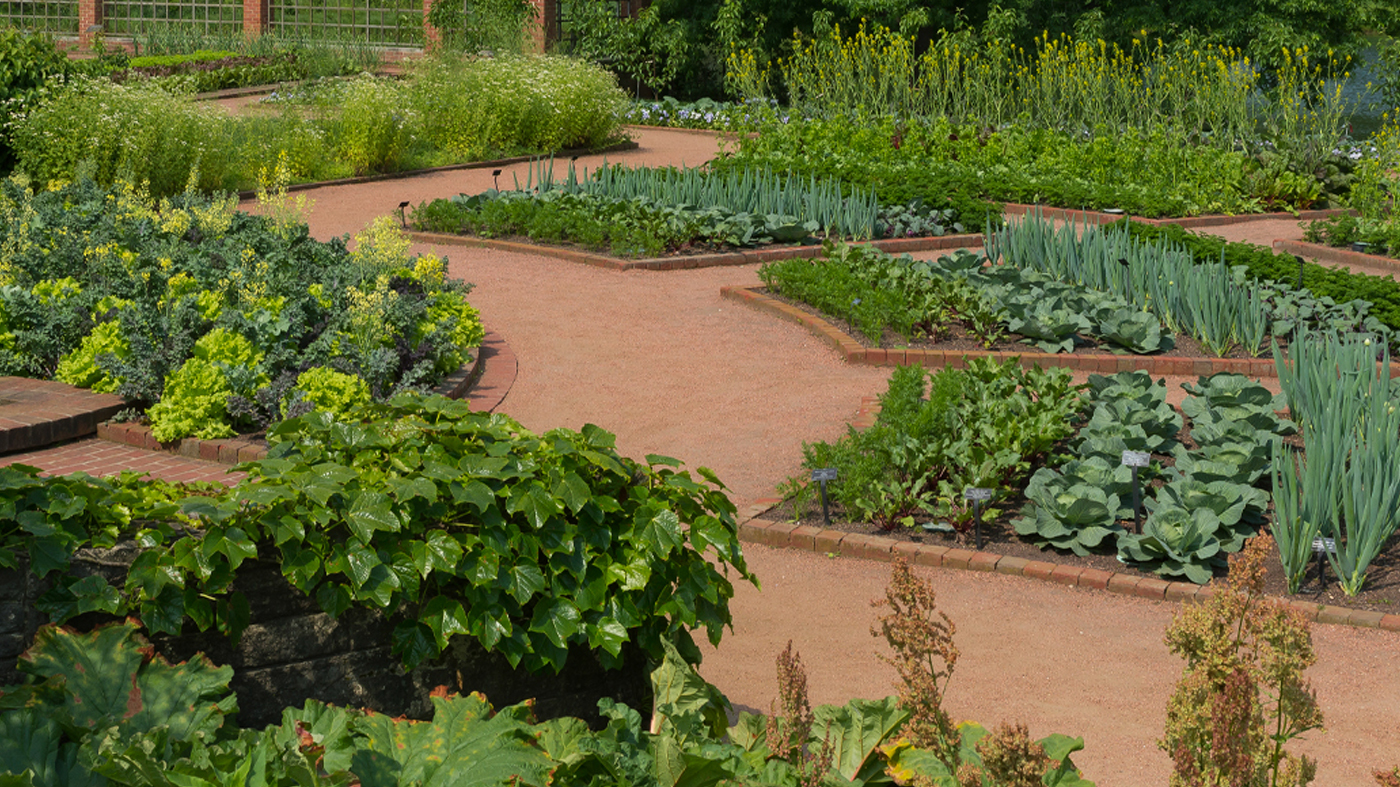
Row Upon Row
Intensive gardening is at work in the crescent-shaped beds packed with crops growing shoulder to shoulder with plants requiring the same growing conditions. (Note the crescent bed design repeated in the Heritage Garden and the terraces of the Crescent). Cabbages (convincing look-alikes for giant green or purple roses), onions, rhubarb, Brussels sprouts, and snap and pole beans (on attractive metal supports) begin to resemble plants in an ornamental garden, not a veggie patch. Statuesque dinosaur kale, bright sunflowers, peppers, parsley, basil, eggplant, and broccoli are joined by Red Malabar spinach twining up brilliant blue tuteurs. Food this beautiful must taste fabulous! Hint. Hint.
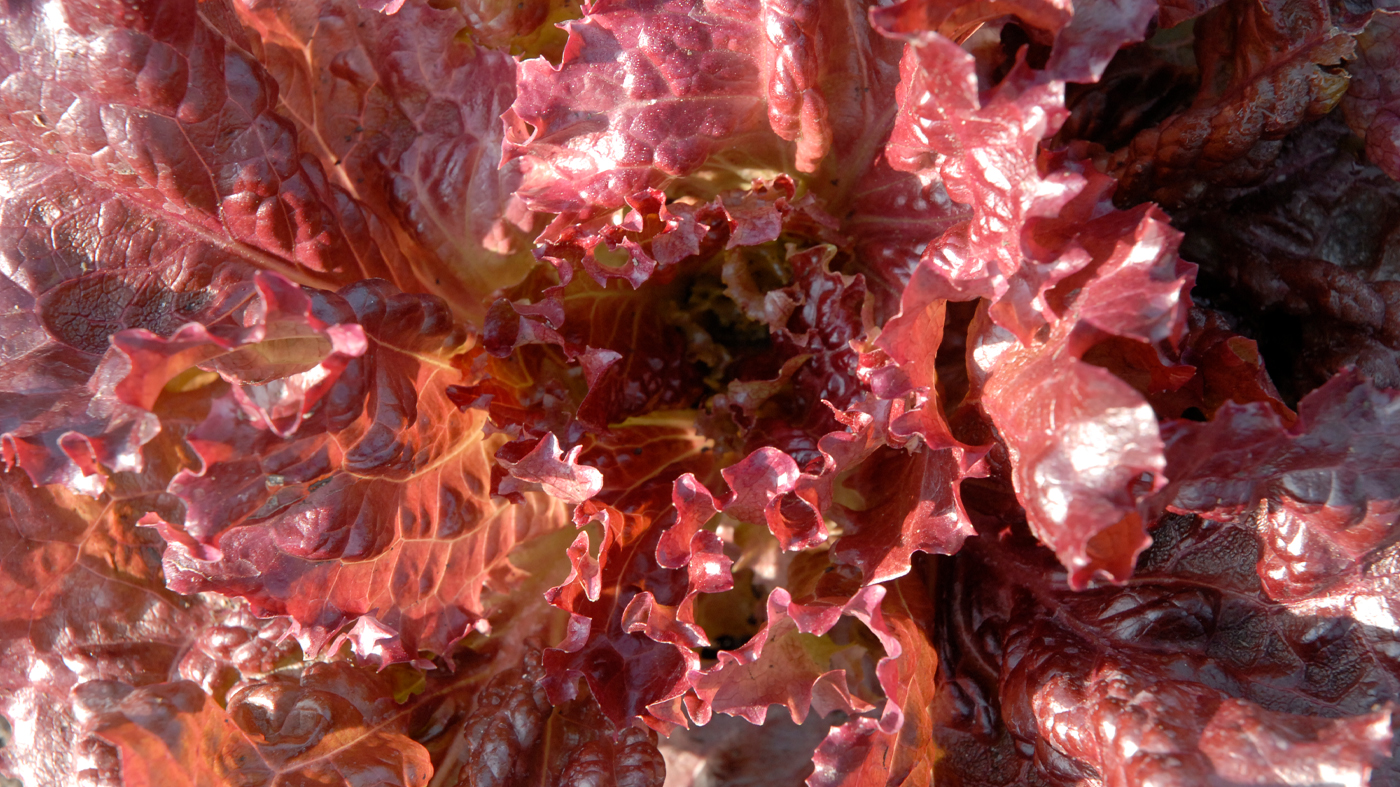
Did You Know?
Plants do have the power to amaze and this garden offers unlimited “oh my, oh wow” moments about these edible plants — our food. Who knew that potato plants have foamy flowers…some veggies are perennials…a rose produces a nutritious fruit…eggplants can be white…lettuce can be dark red…squashes have tiny star and moon tattoos…artichokes do NOT grow on trees…nuts do...not all bugs are bad…there’s a difference between soil and dirt.


